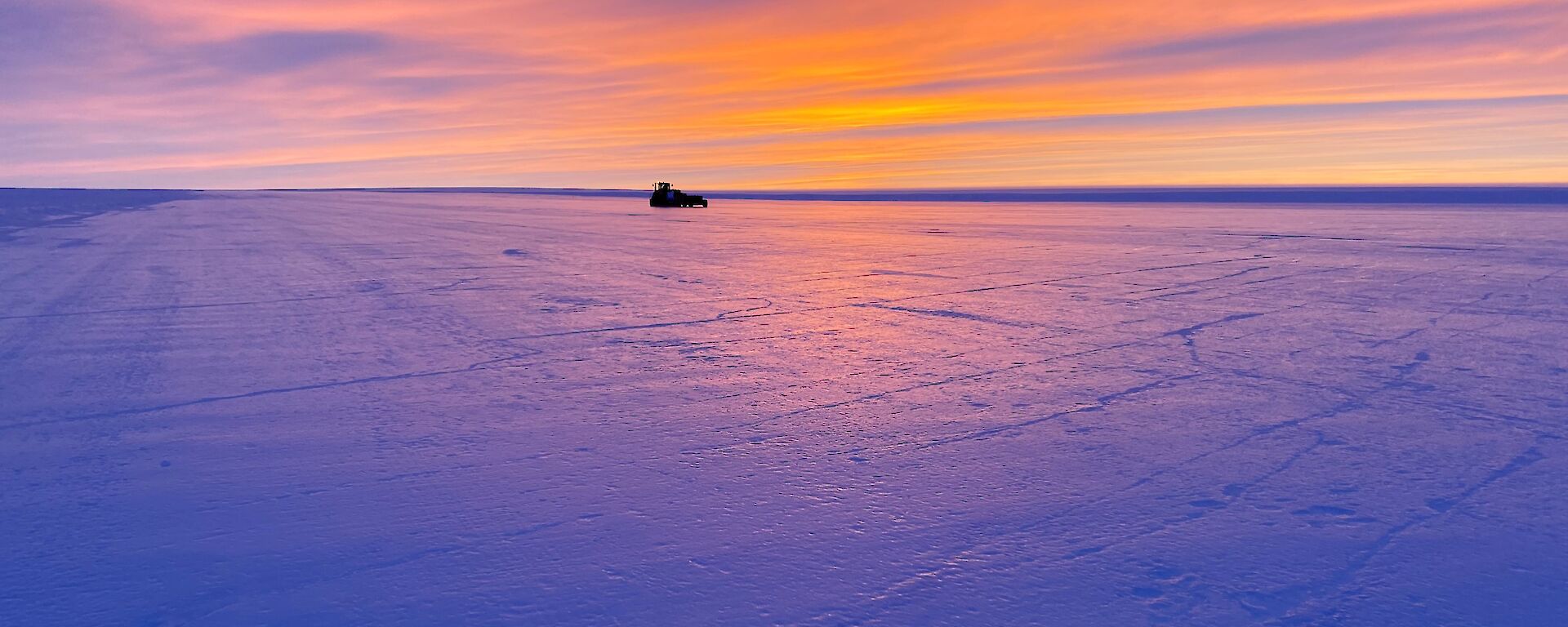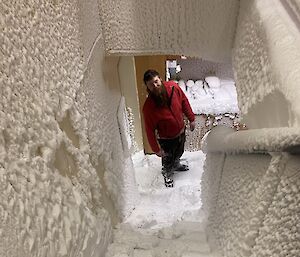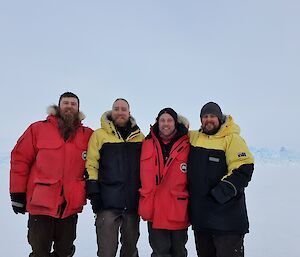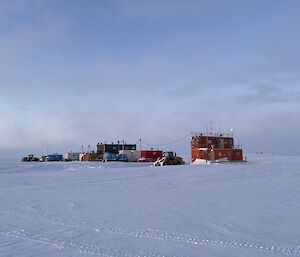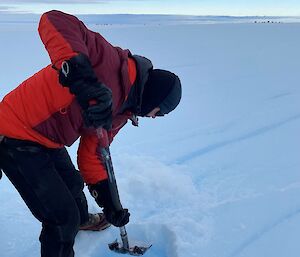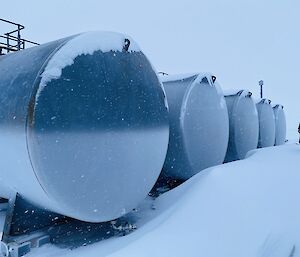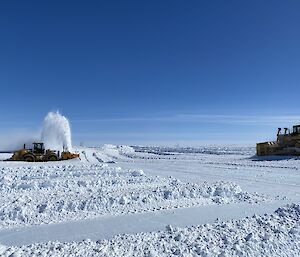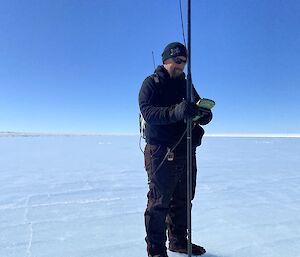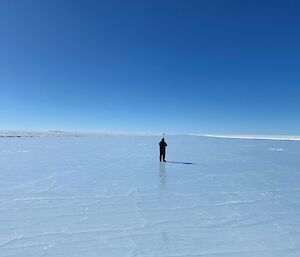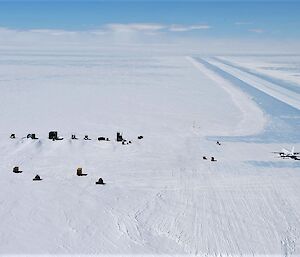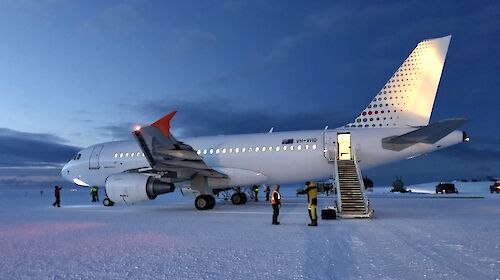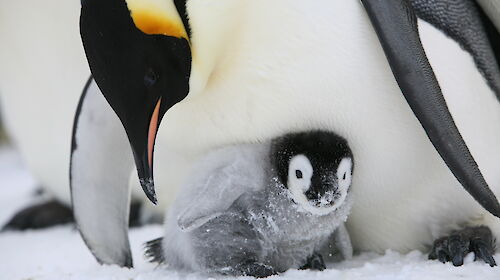For pilots, the flight south from Hobart takes about four hours each way and is often a quick turnaround.
But AAD General Manager of Operations and Safety, Charlton Clark said behind the scenes of a return flight is months of work to make this remote runway ready for access by large jet aircraft.
“At the heart of each season we have a small team in Antarctica that undertake the Herculean task of clearing three kilometres of an ice runway,” Mr Clark said.
“That’s in temperatures down to minus 25 and winds of up to 200 kilometres an hour that batter the team for months on end.”
“The runway itself is about three kilometres long and located on an area of ice about 500 metres thick. It’s pretty flat which is good for runways, but needs to be groomed and prepared before a flight can touchdown each season.”
Wilkins Aerodrome is a seasonal station and intercontinental airfield. Each year it usually opens in October and operates until March, with an approximately six week shutdown period at the height of summer due to ice melt.
Located nearly 800 metres above sea level atop the Peterson Glacier, the runway shifts about 12 metres each year with the movement of the glacier and needs to be regularly realigned.
A blizzard-filled build-up
In typical ‘A-Factor’ fashion, the last few months at Wilkins haven’t always been smooth sailing.
Since returning at the end of winter and shovelling snow out of stairways, connecting power and heating the buildings from below minus 30 to above zero, Aerodrome Manager Matt Ryan and his team of four have faced somewhat “inclement” weather.
Mr Ryan said they were hit by a week-long blizzard in the early stages that “really threw a few spanners in the works.”
“From clear skies when we first arrived, to 90 knots of wind and blowing snow the second week, to a more recent balmy minus 15,” he said.
“The weather is a lot more volatile here than at Casey, so we always try to pick the better weather window for work. It’s important to have things organised so when the weather turns bad and wind suddenly picks up you’ve enough fuel in the generators to get through to the next lull.”
Matt Ryan’s no stranger to winter in Antarctica – this has been his fifth, and third time running the Wilkins Aviation team and start-up operation.
With him has been plant operator Glenn Harradine (35 years of experience in civil construction and earth-moving, nine consecutive seasons in Antarctica), fellow plant operator Dane Riley (20 years of experience around the world) and mechanic Sam Jacobs, who Ryan says has “an ability to fix anything, anywhere, anytime.”
This season, the team has also painstakingly filmed and photographed the entire start-up process.
Ready for anything
Matt Ryan said a lack of daylight hours coming out of winter could also be disorientating, and there were other challenges of living on site, such as needing to don a full polar kit every time anyone travelled the few metres from the sleeping quarters to the bathroom.
He said routine blizzard and wind damage included vents leaking snow, frozen equipment and water pipes, an intermittent internet connection and sometimes radio problems.
“When something fails or stops working we just go back to basics,” Mr Ryan said.
“The Wilkins team is pretty resourceful and adaptable. We don’t get to take short-cuts when doing something as critical as an ice runway and it can be painfully frustrating to see the days ticking over.”
What goes in to waking up the runway itself?
Once the weather cleared, Matt Ryan said the focus shifted to runway repairs, followed by surveying and marking out with poles, flags, windsocks and lights.
Then there was the surface itself – including proof rolling to compact the surface, and tilling with snow groomers to get a level of surface friction needed for the aircraft to land and stop.
Mr Ryan said at least three passes over the surface was needed to achieve “a suitable baseline friction”.
He said managing the team’s fatigue and wellbeing was always top of his mind.
“My team has done a fantastic job,” he said.
“It’s not a small task living and working in a remote field camp. My guys have all looked out for one another and looked after each other.”
“Looking forward to seeing an aircraft on the ground shortly.”
First flight only days away
With the first flights into Wilkins almost upon them, Matt Ryan and his team are also winding up the season for their own journey home.
“Looking forward to seeing some familiar faces, getting out and seeing some family and friends and eating some fresh fruit, not necessarily in that order,” he said.
“I’ve been doing this long enough to know I should know better but also just enough time to realise how lucky I am and that no two Antarctic seasons are the same.”
“I have no idea what I want to do when I grow up.”

